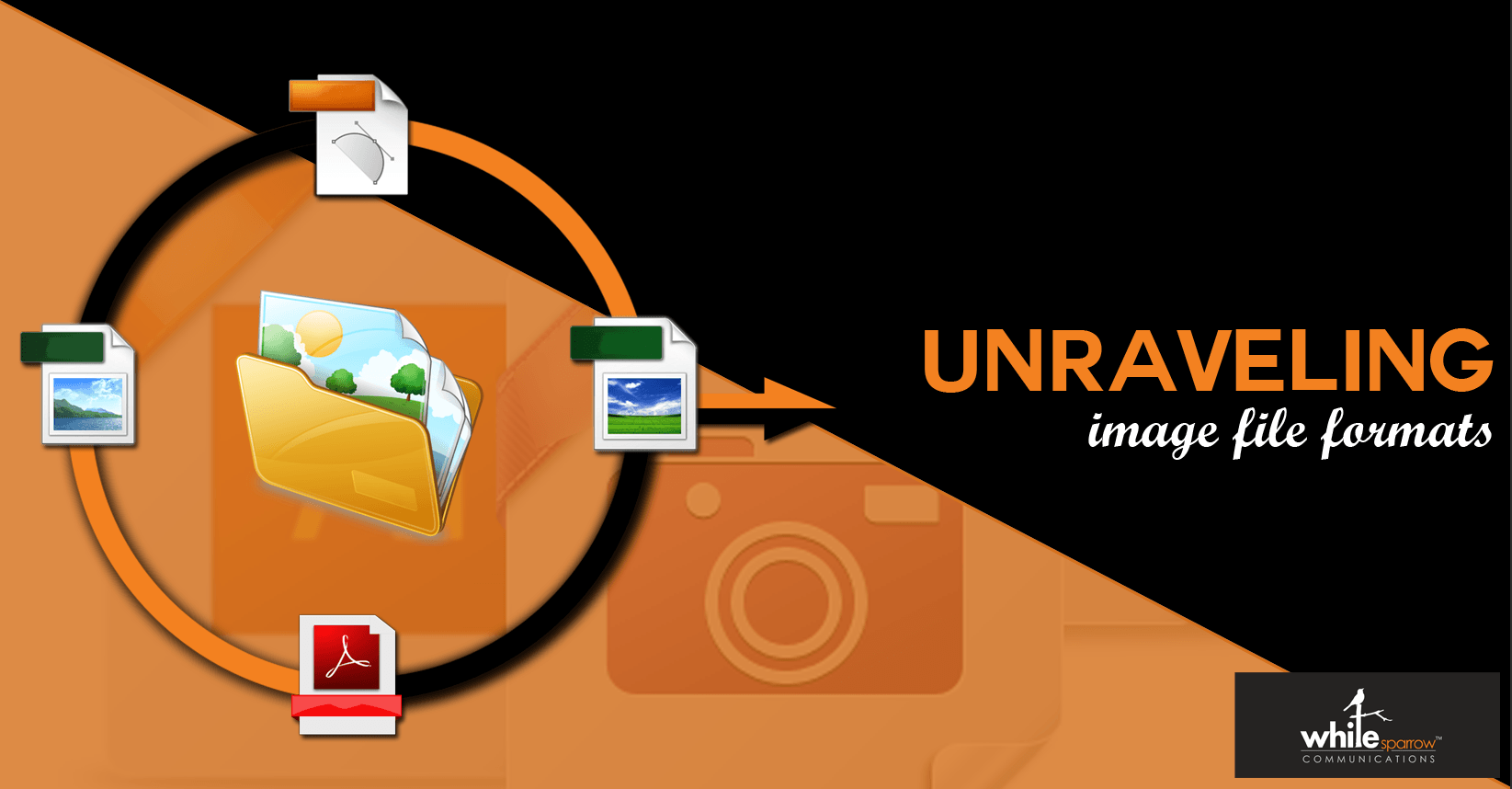Blog September 21, 2015
7 Image File Formats Unraveled

In order to deliver your work in the most effective manner, it is very important to learn the art of sending it in the right format. Choosing the right format for delivery of your artistic piece of work is an absolute necessity to save both time and energy. It is best to see which format is most convenient to print and save and adhere to the guidelines for all design assignments
There are different kinds of formats which are suitable for different print designs. Following are few of the formats which are used in day to day life.
If you are looking to save print designs, then it is advisable to use the following formats
- PDF (Portable Document Format): The PDF format is formed by the Adobe Systems and is very frequently used. In order to use PDF format one needs to download the Adobe Acrobat plug-in. PDF formats can be saved and can be edited with the help of several tools.
- EPS (Encapsulated PostScript file): EPS format is very frequently used in regards to saving images. The best part about this format is that can be resized and saved without blurring the image quality. It is best for saving logos and printing of business cards and pamphlets.
- TIFF (Tagged Image File Format): TIFF is usually used when the client needs a high quality product. The picture quality of TIFF format is better than the JPG or PNG. Nowadays, photographers often make use of this format.
If you are looking to save computer based designs then it is advisable to use the following formats
- JPEG (Joint Photographic Experts Group): JPEG is a widely used format if you are looking for quick loading. It is best suited for web based design. It is useful in sending images through mails since they can be compressed.
- PNG (Portable Network Graphics): PNG files are quite similar to JPEG but have an extra character. They do not lose picture quality when compressed, unlike the JPEG files. They are also used widely for emailing images which require high resolution.
- PSD (Photoshop): These are somehow different from the above two format as they cannot be compressed. These are Photoshop files which are generally used for web based images and logos. If you need to edit the designs in future, then a need of working files come into picture which PSD Files fulfill.
- AI: This stands for Adobe Illustrator and is developed by Adobe Systems. It is widely used for demonstrating single-page vector-based images which can be illustrated in EPS or PDF formats. Initially it was also known as the PGF format.
All the above formats should be on a Designer’s fingertips as clients might not know the technicalities, but you should! This subtle understanding of Client Requirements and responding by using the correct formats is an art and well, All Designers are, at the end of the day, Artists.






